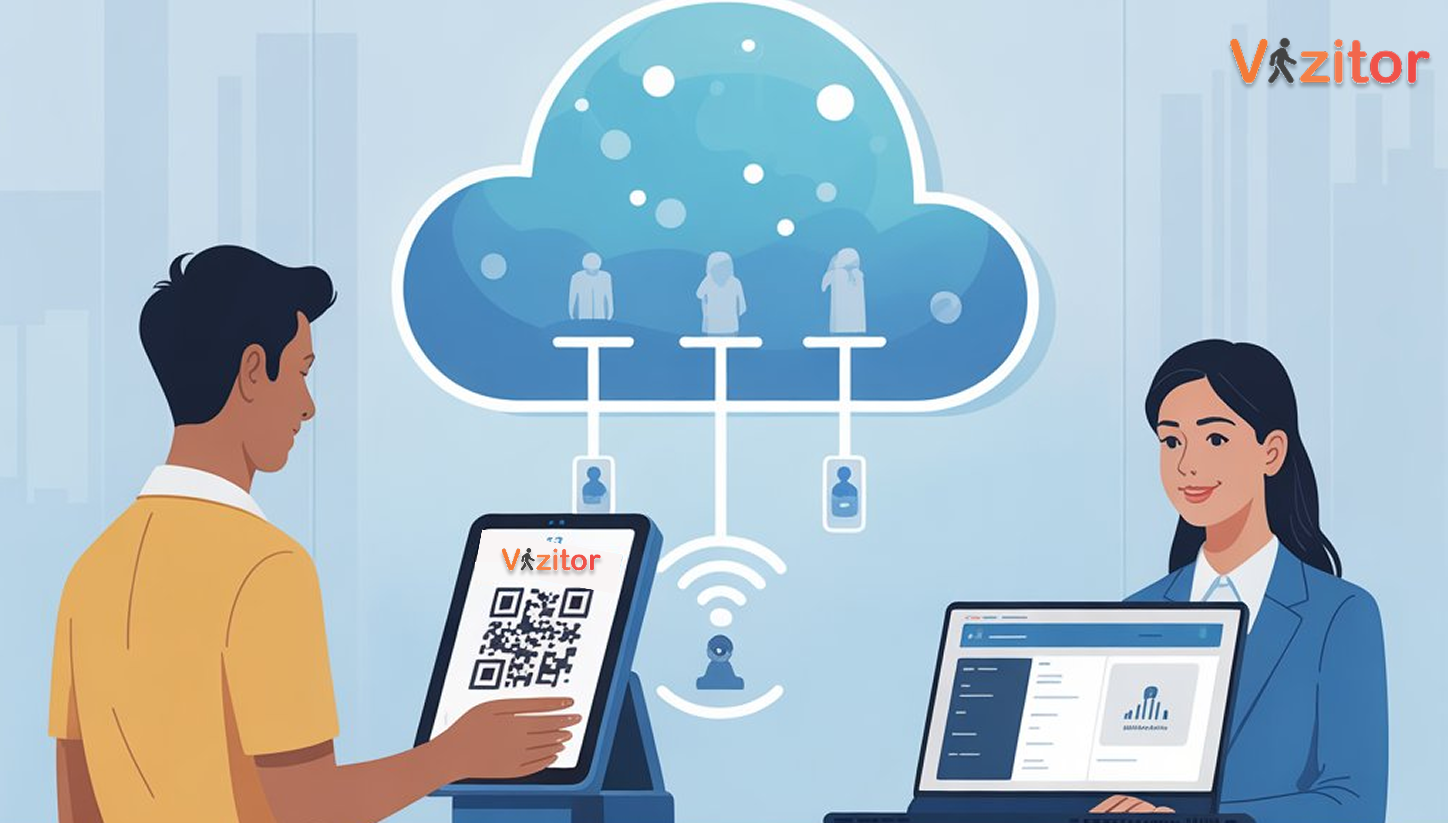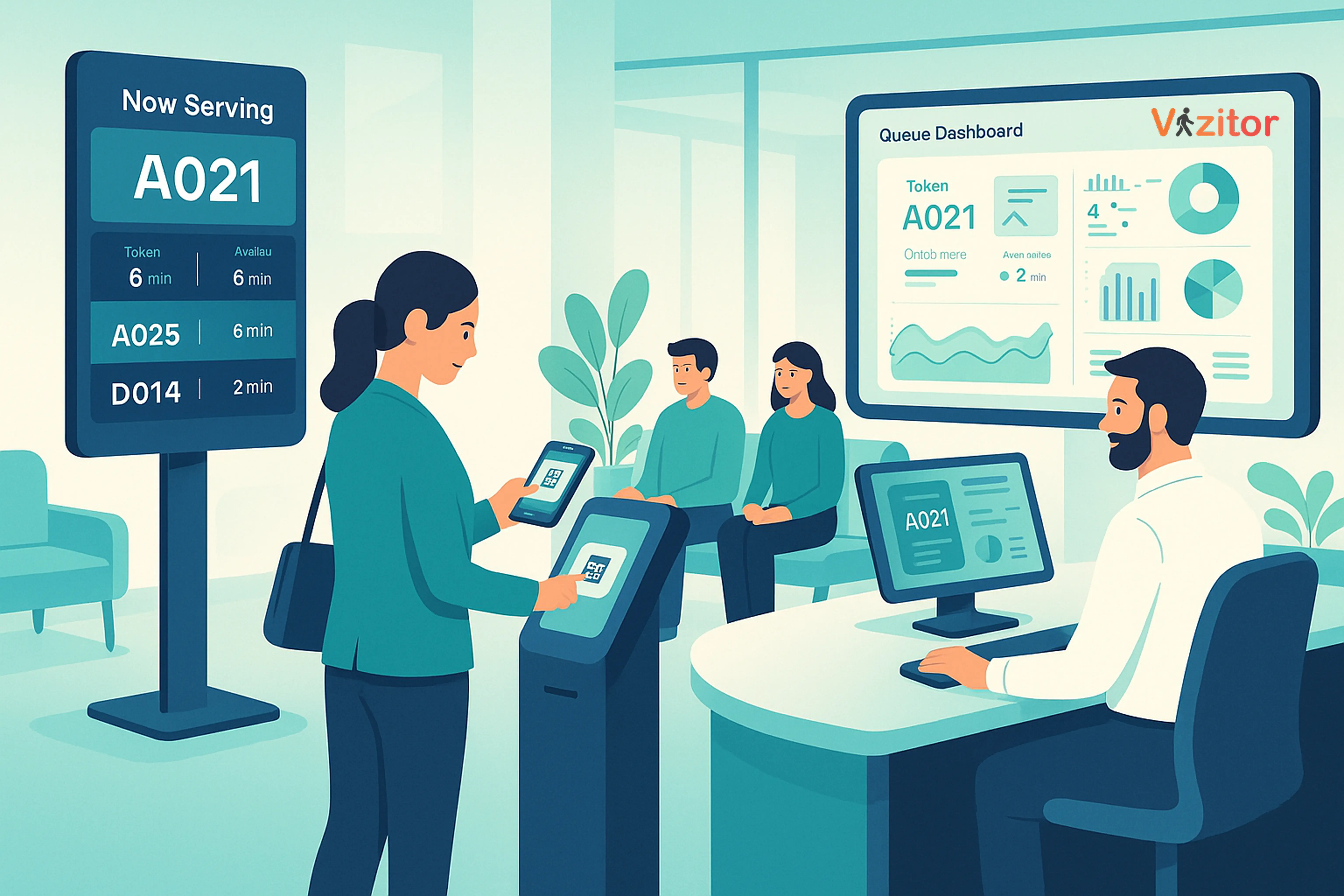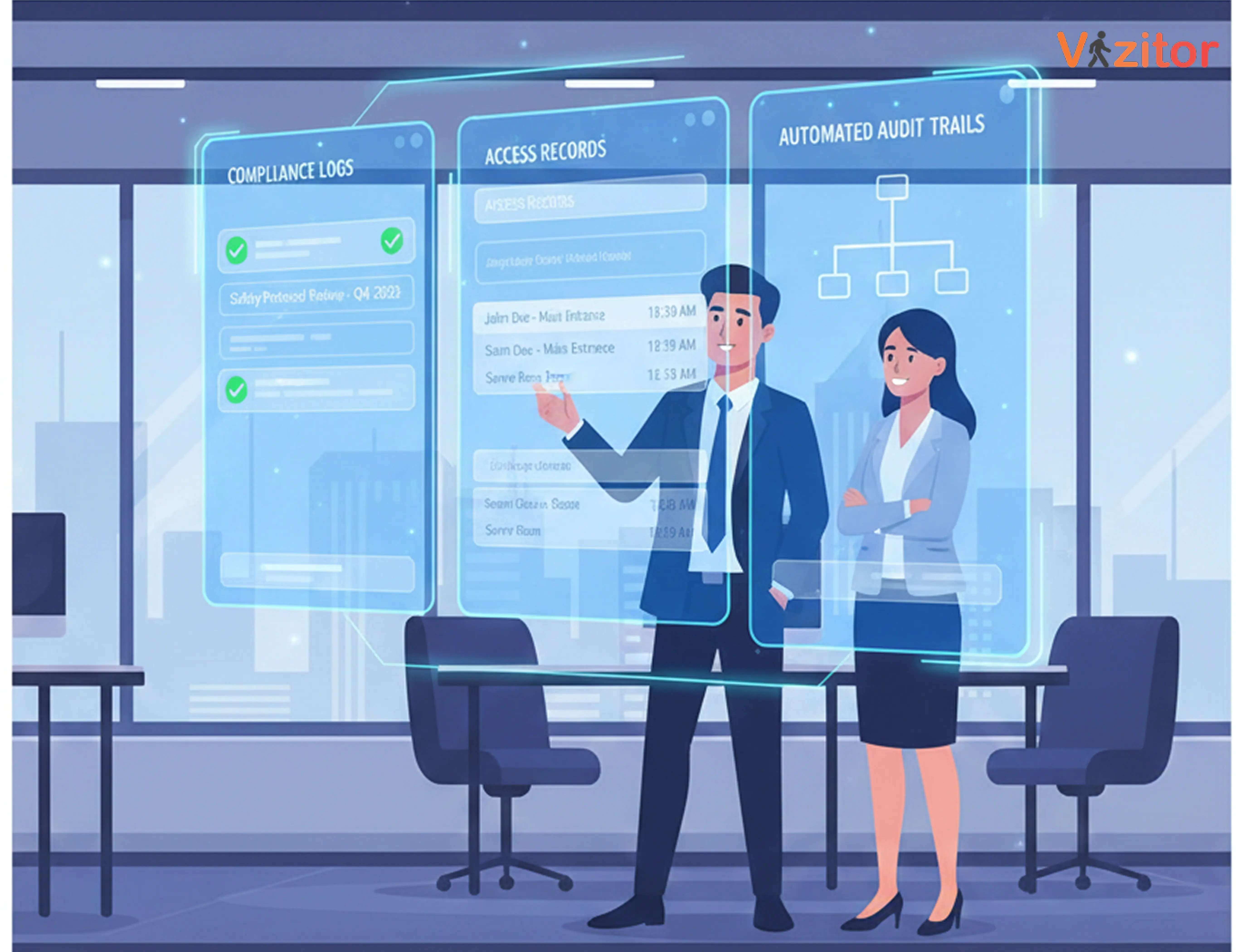Table of Content
Try Vizitor for Free!

Published on: Tue, Aug 26, 2025
Read in 5 minutes
In 2025, organizations face new challenges when it comes to security, compliance, and workplace efficiency. From hospitals to corporate offices, schools to co-working spaces, every facility deals with a constant flow of visitors, contractors, delivery staff, and employees. Traditional manual logbooks or on-premise software no longer provide the flexibility or real-time control that modern businesses demand.
This is where the cloud-based visitor management system (VMS) comes into play. By combining real-time visitor tracking, touchless check-ins, and scalable data management, these solutions are quickly becoming the default choice for future-ready organizations.
In this blog, we’ll explore why cloud visitor management systems are the smart choice in 2025, their benefits, security advantages, and how they align with evolving workplace needs.
What is a Cloud-Based Visitor Management System?
A cloud-based visitor management system is a digital platform hosted on the cloud that helps organizations manage, track, and monitor visitors in real-time. Unlike traditional on-premise systems, cloud-based solutions:
- Require no heavy IT infrastructure
- Allow remote access from any location
- Are scalable with business growth
- Provide secure data storage and analytics
Whether it’s corporate offices, manufacturing plants, hospitals, or educational institutions, a cloud visitor management system streamlines visitor sign-ins, improves compliance, and enhances security without requiring extensive manual effort.
Why Cloud-Based VMS is the Future of Visitor Management
In 2025, digital transformation is no longer optional. Organizations need systems that are secure, cost-effective, and scalable. Here’s why cloud visitor management systems are the smart choice:
1. Enhanced Security with Real-Time Visitor Tracking
One of the biggest challenges with manual systems is fake entries or incomplete logs. A cloud VMS solves this by:
- Capturing visitor data with ID verification
- Providing real-time visitor tracking dashboards
- Sending instant notifications to hosts
- Preventing unauthorized access
2. Scalability for Growing Organizations
Unlike on-premise systems that require hardware upgrades, a cloud-based visitor management system grows with your business. Whether you have one office or multiple global sites, the cloud offers:
- Centralized visitor data
- Multi-location management
- Easy software updates
- No additional server costs
3. Touchless & Safe Check-In Experiences
Post-pandemic, employees and guests expect touchless check-ins. Cloud VMS supports:
- QR code check-ins
- Mobile visitor passes
- Self-service kiosks
- Facial recognition integration
This not only improves the visitor experience but also reduces health risks.
4. Compliance and GDPR-Friendly Visitor Logs
Regulatory compliance is critical in industries like healthcare, banking, and manufacturing. A cloud visitor management system ensures:
- GDPR-compliant visitor logs
- Secure cloud data storage
- Automated audit reports
- Clear data access permissions
5. Seamless Integration with Access Control & Workflows
Modern workplaces use multiple tools for security, facility management, and HR systems. Cloud-based visitor management platforms integrate with:
- Access control systems
- Meeting room booking tools
- Emergency evacuation systems
- CRM & HR software
This creates a unified digital workplace where everything works together.
6. Data Analytics & Insights for Smarter Decisions
One of the hidden advantages of a cloud visitor management system is data-driven insights. Organizations can track:
- Peak visitor hours
- Repeat guest visits
- Department-specific visitor data
- Security breaches and patterns
This helps improve resource allocation, facility planning, and security protocols.
7. Remote Access for Facility Managers
In 2025, many organizations operate in hybrid or distributed models. Cloud-based systems allow remote monitoring of visitor activity from anywhere:
- Mobile dashboards for security teams
- Instant host notifications
- Cloud-based alerts during emergencies
8. Cost-Effective & Eco-Friendly
Switching to a digital, cloud-based solution eliminates:
- Paper logbooks
- On-premise server costs
- Manual staff hours
This reduces both operational expenses and carbon footprint, making it a sustainable workplace solution.
Cloud Visitor Management in Different Industries
To better understand adoption, let’s look at industry-specific use cases in 2025:
- Hospitals & Healthcare- Better patient safety, contractor tracking, compliance with HIPAA.
- Corporate Offices- Improved security, seamless guest experience, hybrid workforce support.
- Schools & Universities- Protection against unauthorized entries, student/parent management.
- Manufacturing Plants- Contractor monitoring, safety compliance, real-time evacuation records.
- Government & Public Sector- Secure, auditable logs, protection of sensitive facilities.
Why 2025 is the Tipping Point for Cloud VMS
Industry reports suggest that by 2025, 70% of organizations will adopt cloud-based visitor management systems as part of their digital transformation strategies. Driving factors include:
- Rise of hybrid workplaces
- Regulatory compliance pressure
- Increasing need for security automation
- Demand for data-driven workplaces
In short, organizations that fail to adopt cloud-based solutions risk falling behind in efficiency, compliance, and security readiness.
How to Choose the Right Cloud Visitor Management System
If you’re considering a cloud visitor management system in 2025, look for features like:
- Scalable pricing for your business size
- Data encryption and compliance certifications
- Integration capabilities with your existing systems
- User-friendly design for both staff and visitors
- Reliable support and updates
Conclusion
A cloud-based visitor management system is no longer just a “nice-to-have” in 2025, it’s the backbone of modern workplace security and efficiency. From real-time tracking to scalable integrations, GDPR compliance, and touchless visitor experiences, cloud VMS brings unmatched advantages over traditional systems.
If your organization is still relying on manual or on-premise visitor tracking, now is the time to upgrade. A smart, cloud-powered solution will not only secure your workplace but also future-proof your operations.
FAQs on Cloud-Based Visitor Management Systems
Q1: What is the difference between a cloud-based and on-premise visitor management system?
A cloud-based VMS is hosted online, requires no local servers, and can be accessed remotely, while on-premise systems rely on physical infrastructure and are harder to scale.
Q2: Are cloud visitor management systems secure?
Yes. Leading cloud VMS providers use data encryption, GDPR-compliance, and role-based access controls to ensure visitor information is safe.
Q3: Can a cloud-based system handle multiple office locations?
Absolutely. Cloud VMS is scalable, allowing organizations to manage visitors across multiple sites from a centralized dashboard.
Q4: How do cloud visitor systems improve compliance?
They automatically maintain audit-ready logs, ensure GDPR compliance, and generate real-time reports for inspections.
Q5: Is cloud-based visitor management cost-effective?
Yes. It reduces costs on hardware, paper logbooks, and manual staff hours, while offering long-term scalability.









